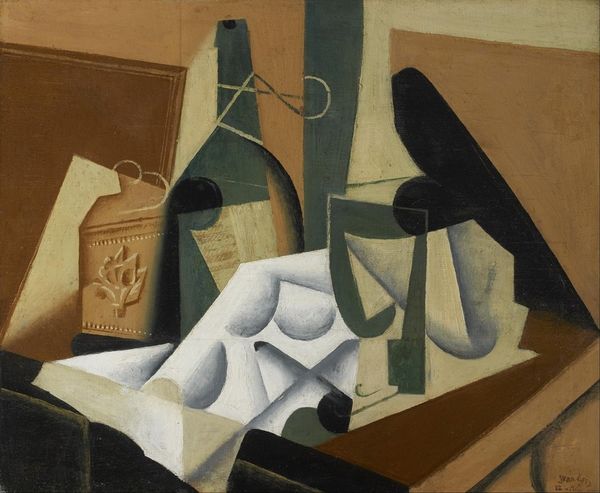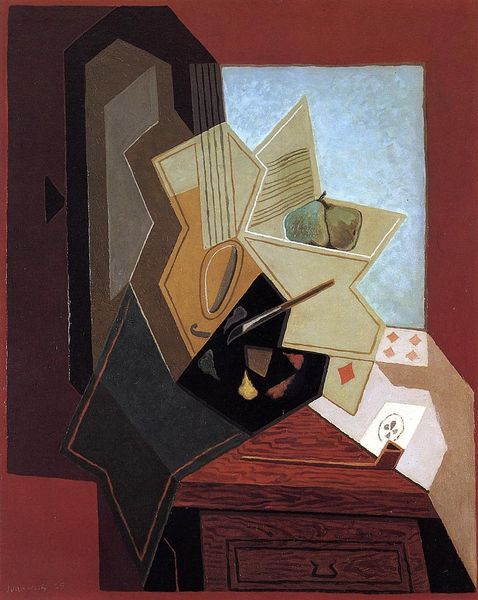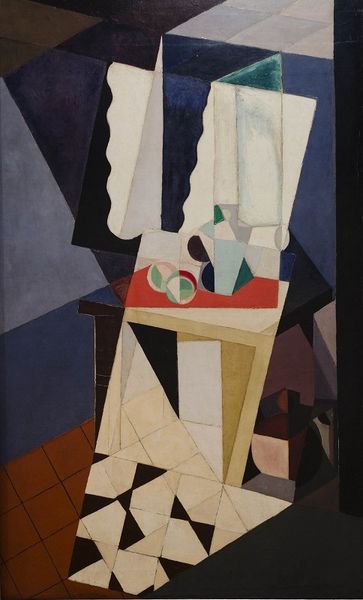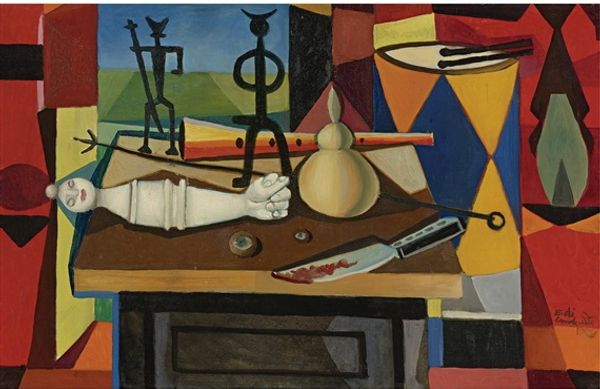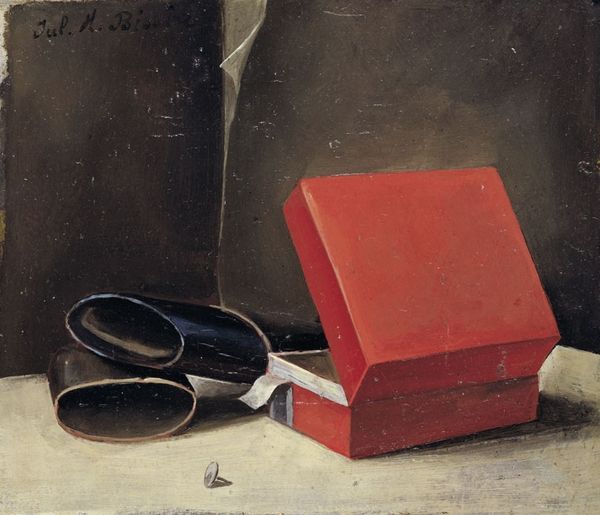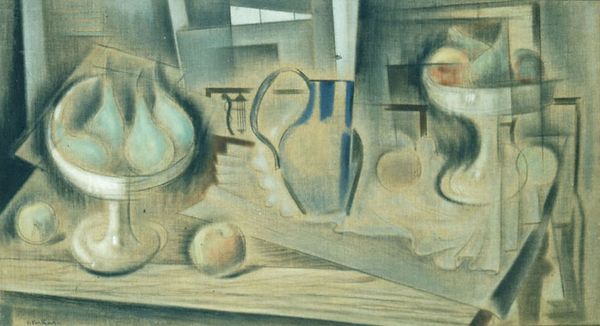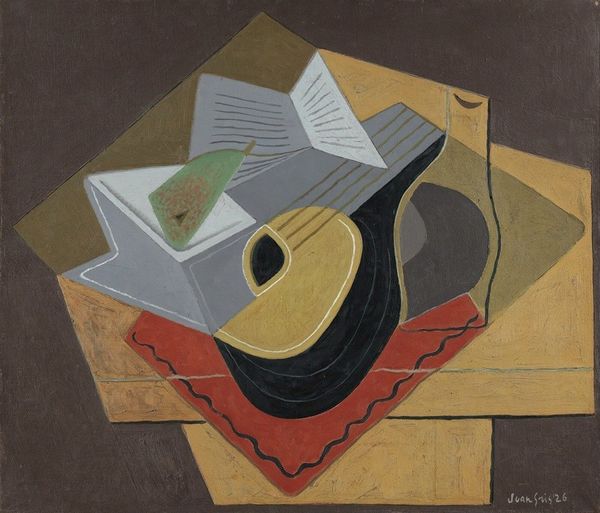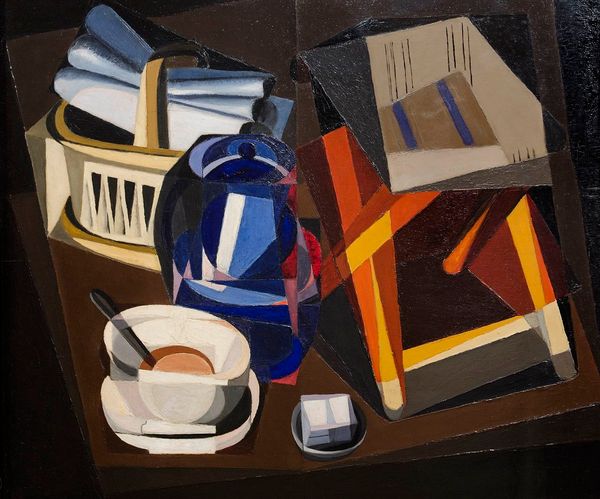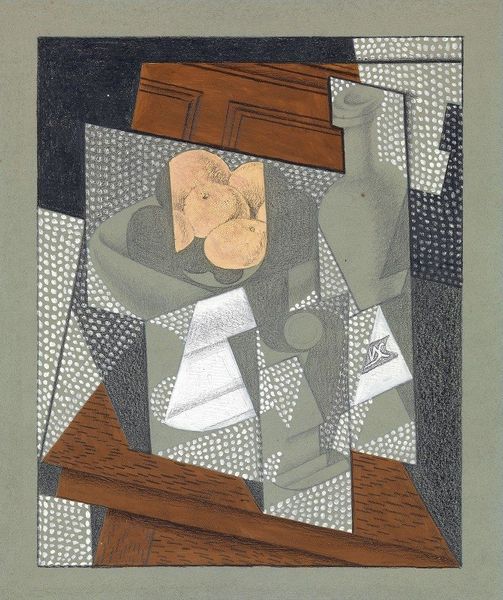
oil-paint
#
oil-paint
#
oil painting
#
modernism
#
realism
Copyright: Yiannis Moralis,Fair Use
Editor: Yiannis Moralis's "The Table," painted in 1947 using oil paint, strikes me as intensely personal, like a paused moment in an artist's private space. What do you see in this piece, particularly considering the era in which it was created? Curator: Absolutely. Painted in post-war Greece, this seemingly simple still life carries significant weight. Consider the items: writing implements, musical instruments. Moralis is perhaps hinting at the silenced voices of artists during the war, the suppressed creative expression now yearning to resurface. How does the muted palette resonate with that potential interpretation? Editor: It definitely lends itself to a sense of solemnity, almost resignation. The grays and browns dominate. But then there are hints of brighter colors...the red in the background and hints of gold. Curator: Exactly. That tension between muted tones and suppressed vibrancy is crucial. What could those nascent brighter colors symbolize, given the sociopolitical context? Could they be whispers of hope, perhaps coded allusions to resistance or the rebuilding of cultural identity through art after a period of oppression? How does that interpretation speak to the lasting relevance of such work today? Editor: I hadn't considered the implications of the colors so deeply, I was looking at this piece with formal elements only. Your perspective reframes this into a powerful narrative. I see this now not just as a study of form, but as a testament to the enduring power of art in the face of adversity. Curator: And that intersection, between aesthetic composition and sociopolitical narrative, makes this work so compelling and essential to contemporary dialogues about art and its role in society. It challenges us to look beyond the surface, to excavate meaning, and connect to historical struggles reflected within art.
Comments
No comments
Be the first to comment and join the conversation on the ultimate creative platform.
